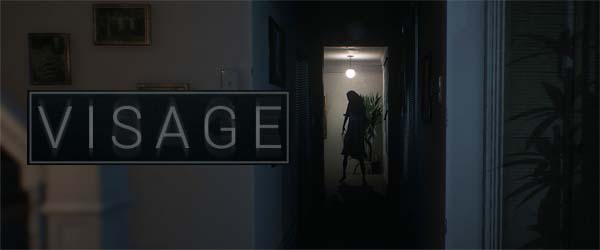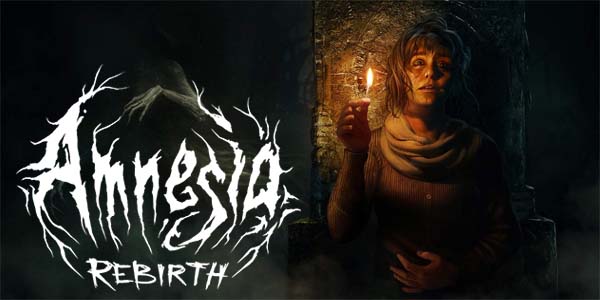
It's virtually impossible to talk about Visage without first referring back to Hideo Kojima's infamous P.T. demo for the canceled Silent Hills project. P.T. has certainly left an almost Amnesia-sized footprint on the horror video gaming landscape, and it's hard not to refer back to Amnesia when talking about any horror game in the past 10 years either. It's hard to believe that P.T. was released six years ago, and the wanna-bes, copy-cats, and attempts at a spiritual successor have been rolling in ever since. The latest indie project to try to replicate P.T.'s success is SadSquare's Visage, a first-person horror game set entirely within a single suburban house in the 1980's. With Allison Road canceled, and Konami giving us no evidence that rumors of a new Silent Hill game (or a revival of Silent Hills itself) is true, Visage is probably the closest yet to a full-fledged realization of the concepts and novelty of P.T..
P.T. has influenced an entire generation of horror games.
P.T. mixed with a little Amnesia and Resident Evil
I think that part of the appeal of P.T. was its simplicity. With that simplicity came elegance. After all, it only had like 2 buttons that actually did anything, and the whole game consisted of walking around the hallway and zooming in to look at things. That's fine for what is essentially a tech demo that only takes an hour or two to beat, but for a fully-realized, full-length game like Visage, you need a bit more substance. Visage does deliver in that regard. While the entire game could be boiled down to just wandering around a house looking at spooky things, it also has several more traditional survival horror systems, which are used in new and sometimes creative ways.
The most substantive of these mechanics is a "sanity" mechanic pulled straight from something like Amnesia or Eternal Darkness, and which replaces a more traditional health system. The ghosts haunting the house will kill you and force a Game Over if they catch you, so your only defense is to run away. But when you run away, you need to try to run into a part of the house that is well lit, as the player character seems to be very afraid of the dark, and his sanity rapidly depletes if you're standing or wandering around in the dark.
The little red brain in the corner indicates you're in
danger of succumbing to a potentially-lethal haunting.
I wish the little sanity indicator had been moved to one of the top corners of the screen. Holding certain items in your left hand (particularly the lit lighter) often covers up or obscures the icon, making it hard to read. Other U.I. elements, such as some button prompts, will also draw a black bar across the bottom of the screen, which also covers up the sanity indicator.
Visage has some pretty good lighting effects, with realistic, dynamic shadows and darkness that is actually pitch black. It's not uncommon to catch a glimpse of a shadow from a flickering or swaying light in the corner of the screen and think that it's an apparition. Unfortunately, there's also some texture pop-in when playing on my PS4 Pro that happens when making sudden turns or when moving between rooms. This also looks like an apparition, and acted to quickly desensitize me to the deliberate peripheral visual trickery that the game tried to employ later.
The ambient sound design is also quite good. There's the cliche background ambiance of a rainstorm and thunder, but it's accompanied by numerous creaks and groans within the house itself. These creaks and groans, combined with the narrow corridors, blind corners, and ubiquitous darkness help to keep the horror atmosphere tense, especially in the early hours. Are those footsteps in the attic above me? Did I just hear something behind me? Is there an apparition waiting around the corner? The groaning and creaking reminded me of the novel House of Leaves, which I read over the summer, and which describes its house as "growling" whenever it reshapes its impossible geometry.
The house of Visage is also claustrophobic enough, cluttered enough, and confusingly laid-out, such that navigating in the dark is genuinely difficult. I had to play for hours (and finish more than a whole chapter) before I really started to get a feel for the layout of the house. Remembering which rooms and objects are where is hard enough in the early hours with the lights on. Not being able to see where I'm going only made early-game exploration feel hopelessly futile -- but in the good horror game way of making me feel unsure of my surroundings and vulnerable.
The house has a surprisingly large and complicated floorplan.
Keeping it well lit will both keep you sane, and also help navigate. [More]

The first few minutes of Amnesia: Rebirth had me expecting much more from the game. The first game, The Dark Descent revolutionized and resurrected the horror genre after major publishers basically gave up on horror altogether, and it provided innovative new ideas that have been iterated upon by almost every horror game since. Dark Descent has the player waking up in a decrepit gothic castle and then descending into dark, atmospheric corridors in which every moving shadow, every creaking floorboard, and every gust of wind ratchets up the tension.
The oppressive light of the sun can be as threatening as the dark.
Rebirth begins with a plane crash that strands the player in the middle of the Sahara desert and prompts the player to find shade from the oppressive heat. The player knows a bit about the protagonist and the situation, it's bright and saturated in color, and is totally the opposite of how Dark Descent begins. It made me think that Rebith might further innovate the horror genre by establishing new tropes, such as using sunlight as a tool for horror instead of cliché darkness. Dark Descent had you cowering in candlelight to restore your sanity after a trek through the darkness. Maybe Rebirth would invert that mechanic and have you seeking the dark, cool corners of the map to escape the parching heat of the sun?
Well, that idea kind of goes out the window when you take shelter in a dark cave about two minutes into the game. After this introductory chapter, it's mostly just back to the same tricks as the first game, except without the expert pacing and subtle atmospheric tension and mystery.
Five minutes after wandering into that cave, I travel through a glowing portal in the walls and step into a hellish Lovecraftian otherworld. There's no build-up to it. No anticipation. Just BAM! portal to alien landscape! Explore for a few minutes, then back to the dark caves. Rebirth kind of blows its load right here at the start by introducing the player to this otherworld right away. I guess you could say that visiting the Lovecraftian otherworld is a natural progression from the first game, which only hinted at such a world's existence, but geez, let us wonder about it for a bit before you show it to us.
Five minutes into the game, and Amnesia: Rebirth blows its load with a Lovecraftian otherworld.
Showing off the goods too much and too soon then becomes a recurring theme throughout the game. My first encounter with the monster had it grab me and hold me up in front of its face for a good 5 or 10 seconds, giving me a good, long look at its well-lit, un-inspired visage. The monster from the original game was usually glimpsed through fog or darkness, and its unnatural proportions and distorted face and jaw made me wonder if I was looking at a person or not. And when I finally did start to get better looks at it much later in the game, it revealed itself to be an instantly-identifiable, iconic monster wholly unique to Amnesia. It wasn't just some generic-looking ghoul, which is sadly the case with Rebirth's monster. [More]
dacd5eb4-a39b-47df-96c5-209cc9ef3cd5|1|5.0
Tags:Amnesia, Amnesia: Rebirth, Amnesia: the Dark Descent, Amnesia: a Machine for Pigs, Frictional Games, horror, survival horror, light, fear, monster, physics, puzzle

Firaxis will be releasing Civilization VI DLC packs with new game modes, new civilizations, and new leaders through March of 2021. November's update added a very unique leader to the Civilization VI roster: Hammurabi of Babylon. Both the Babylonian civilization and its leader Hammurabi have been playable in multiple past iterations of the Civilization series, but Hammurabi's leader ability is so unique and game-changing that I felt I had to cover it immediately.

For future releases that include multiple leaders or civilizations, I may put up polls on Patreon to let my Patrons decide which civ or leader to cover first (if Firaxis gives enough advance notice). I may also put up polls asking if my Patrons would prefer that I make guides focused on the new game modes. So if you would like to vote on which content you would prefer to see sooner, I hope you'll consider supporting the creation of this content on Patreon.
The city of Babylon is one of the earliest cities ever built, having been settled between the 23 and 19th century B.C.. It was built along banks of the Euphrates River, south of modern-day Bagdad, with steep embankments in order to contain and utilize the river's seasonal floods. It is believed that Babylon was the most populous city in the world during the two heights of the Babylonian empire in 17th century B.C. and 6th century B.C., and it was the first city to reach a population of 200,000.

Hammurabi is an ancient Babylonian king who ruled in the 18th century B.C.. He is famous for his Code of Laws that was long believed to be the first set of codified laws ever created. There were, however, earlier codes of laws, but Hammurabi's code differed from earlier codes by establishing the principle of the presumption of innocence for the accused, and that the accuser and accused must both provide evidence to establish guilt or innocence. It also limited the amount of retribution that the victim my inflict upon the guilty by prescribing set penalties for specific crimes. Though many prescribed punishments were brutal (such as disfigurement or execution), the code ensured that the victim of a minor crime would not respond by murdering the criminal. Hammurabi had his law transcribed (in the common language) onto a cylindrical stele and placed at the center of town so that every literate person could read it, presumably so that everyone would know what constitutes a crime and what the punishment for each crime is, so that the administration of justice would be seen as fair to the populace.
DISCLAIMER:
Civilization VI is still a "living game". Strategies for the game (and for specific leaders and civs) may change as Firaxis applies balance patches, introduces new features, or expands the game through further DLC or expansion packs, or as the Civ community discovers new strategies or exploits. As such, the following strategy guide may change from time to time. I will try to keep it up-to-date, and will make notations whenever changes are made. I'll also post links in the official 2K forums and CivFanatics, where I'll also report any changes made. If possible and practical, I will try to retain the original content of the strategy for posterity.
I welcome any feedback or suggestions that readers wish to offer. Feel free to post on the linked forums, or by posting a comment at the bottom of the page.
This guide is up to date as of the release of the "New Frontiers" November 2020 Update (ver. 1.0.8.4)
Babylon is a powerful technological force in Civilization VI, that acquires technologies primarily by completing eurekas. It also gets large food bonuses when settling adjacent to rivers, that allows its cities to grow quickly and grow large, and new districts get a head start in infrastructure. [More]
5f65ce87-0093-404d-b243-d4d037af2ecf|1|5.0
Tags:Sid Meier's Civilization, Civilization VI, Babylon, Hammurabi, enuma anu enlil, ninu ilu sirum, palgum, sabum kibittum, Cradle of Civilization, science, eureka, cavalry, anti-cavalry, water mill, river, fresh water, district, building, envoy

My blog readers know that I'm a fan of historic strategy games. Two of my favorite PC game franchises are Civilization and Total War, and I've dipped my hands into plenty of other historic strategy games ranging from the prehistoric Dawn of Man, all the way to Ultimate General: Civil War and Company of Heroes. But there's one prestigious set of historic strategy games that I've yet to get into. That is Paradox's historic strategy lineup of Crusader Kings, Europa Universalis, and Hearts of Iron. I own Crusader Kings II and Europa Universalis IV on Steam, and I've always wanted to get into them. I have a friend who plays them a lot, and the game looks really fun, but I was just never able to figure either of them out.
I tried booting up both a couple times and was just immediately overwhelmed. I tried the Crusader Kings II tutorial twice, and still didn't feel like I had a firm enough grasp on the game to feel compelled to keep playing. Part of that is because both games have myriad expansions and DLC that have just further complicated the games and repeatedly raised the bar of entry for newcomers. The only one of Paradox's tutorials that I felt gave me a reasonable grasp on the game was the tutorial for Stellaris.
When I saw previews for Crusader Kings III, I immediately put it on my watch list and committed myself to buying it day one, so that I could get in on the ground level in the hopes that it will be easier to grasp before Paradox starts releasing countless DLCs. It seems to have paid off, as I've been hooked on the game on and off since launch, and that addiction has cut into my Civ playing time, as well as delayed many of my blog projects and YouTube content. So for those of you eagerly awaiting new Civ strategies or the next installment of "How Madden Fails to Simulate Football", you can blame Paradox Interactive for the delay...
I am not the state
As someone who was never able to get into the previous game, I cannot say if Crusader Kings III is "dumbed-down" compared to its predecessor. It is, after all, still insanely complicated. But I definitely feel like it has a gentler learning curve and a much more effective tutorial compared to its predecessors. The hand-holding of the tutorial really did help me get a better understanding of how the various mechanics were working, and I've also found it much easier to navigate the revised U.I. and find the information that I'm looking for. I still feel like I have no idea what many of the U.I. panels mean, but I at least understand enough of the basics this time around to actually feel comfortable playing the game.
If you're unfamiliar, Crusader Kings is a medieval grand strategy game in which you play as the king of a small, European (or Middle Eastern or African) kingdom. You engage in diplomacy and court intrigue to increase your wealth and power, fight wars to conquer territory, and manage your growing holdings. But unlike a game like, say Civilization, you do not play as an abstraction of the state itself. Instead, you play as a line of rulers in a single family dynasty. You play as a single king (or queen) character at any given time. This king grows old, and eventually dies, at which point, you take control over you chosen heir and continue playing the game as that character. If you ever get to a point in which you have no family heir to carry on when you die, it's Game Over.
When your player character dies, you take over as that character's primary heir.
As much improved as the tutorial is, I do feel that it has one glaring weakness: it doesn't really cover succession. The tutorial basically puts you in control of a 40-year-old king in Ireland. It shows you how to press a few claims, use a casus belli to press those claims, create a title, deal with vassals, marry off a child, and then it basically just hands you the reigns and says "OK, now keep playing". And yeah sure, these are all the things that you spend most of the game doing. But I would say that arguably the most important part of the game is declaring your heir and setting up your inheritance to maximize the territory that your primary heir retains power over. I think succession is the single most important part of the game, and the tutorial doesn't cover it at all. When it finally happens, there's a tool tip that pops up to explain some stuff, but it didn't really help me all that much to understand what was happening, and a tool tip popping up after the fact certainly didn't help me to prepare for my king's inevitable death and inheritance. [More]
eb8fb312-cf3a-447e-aaf9-982c809e4e0e|0|.0
Tags:Crusader Kings, Crusader Kings 3, Paradox Interactive, Paradox Development Studio, strategy, grand strategy, RPG, history, simulation, medieval, king, Europe, crusades, war, casus belli, dynasty, inheritance
This past weekend's college football match between Vanderbilt and Missouri wasn't much of a football game. Missouri trounced Vanderbilt 41-0. There was never a contest to be had here, and Missouri had comfortably covered the 14-point spread by halftime -- then went on to cover it by a factor of 3. This otherwise un-noteworthy game did, however, make headlines. That is because this game saw another breaking of the glass ceiling for women in football. In this game, Sarah Fuller became the first woman to play football for a Power 5 conference.
Sarah Fuller is a senior goalkeeper for Vanderbilt's soccer team -- a team that has performed much better than the football team, going 8-4 and sweeping the SEC tournament. She was recruited onto the football team as a place-kicker after COVID-19 contact-tracing forced much of Vanderbilt's special teams roster into quarantine.
Sarah Fuller kickoff for Vanderbilt to start the second half,
and became the first woman to play in a Power 5 football conference game.
Vanderbilt's offense couldn't do anything all day, so sadly, Sarah never got a chance to kick a field goal or extra point. Her only play in the game was the second half kickoff, which she squibbed to the sideline for no return. She didn't get to score any points, but she did play.
Her kick was the only Vanderbilt highlight worth sharing, and it was shared on social media by the school and by multiple sports media outlet, where it was subject to lewd comments and ridicule by pathetic men -- because of course it was. Men criticized the kick for being squibbed for only 35 yards, completely failing to recognize the context in which the kick was made. The team was coming back from halftime, down 21-0. It is not uncommon for a team to squib a kickoff in such a situation in order to prevent a return for touchdown. It was a (for lack of a better word) "workman-like" kick.
Besides, even if the distance wasn't impressive, her placement of the ball was. It landed within a few yards of the sideline without going out of bounds. This is probably exactly where the coaches wanted her to put the ball. A ball so close to the sideline might discourage the returner from attempting to field it in the hopes it would go out of bounds, result in a penalty, and give the team even better field position. If unfielded, the ball would be live, and could be recovered by the kicking team. I would not be surprised if this was a designed kick with the hopes of tricking Missouri into giving up a turnover and put some spark into Vanderbilt's offense. Unfortunately, the kick bounced and was downed by a Missouri blocker, leaving Vanderbilt with no chance to recover the ball. All the men criticizing Sarah's "weak" kick, possibly only served to highlight their own weak knowledge of the sport of football.
And that was it. One play, and now Sarah Fuller's name is forever enshrined in college football history. [More]
e68412f5-3fef-42b4-ac76-bdb52a9bef3d|3|2.3
Tags:football, Sarah Fuller, Vanderbilt University, women, equality, gender, gender equality, Madden NFL 21, Katie Hnida, University of New Mexico, The Yard
|

| 12 | | | | | | | 60 | | 11 | | | | | | | 55 | | 10 | | | | | | | 50 | | 09 | | | | | | | 45 | | 08 | | | | | | | 40 | | 07 | | | | | | | 35 | | 06 | | | | | | | 30 | | 05 | | | | | | | 25 | | 04 | | | | | | | 20 | | 03 | | | | | | | 15 | | 02 | | | | | | | 10 | | 01 | | | | | | | 05 |
|